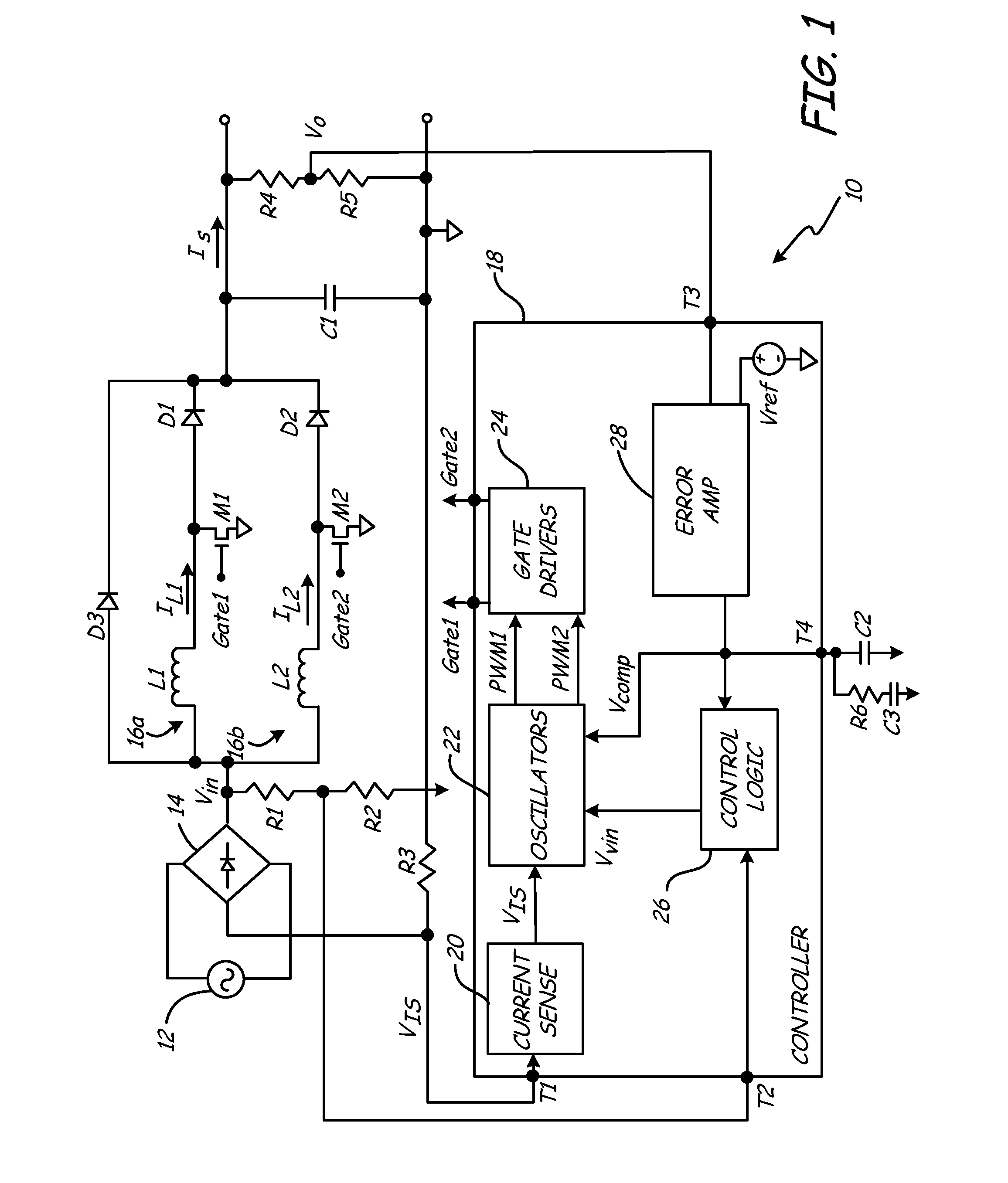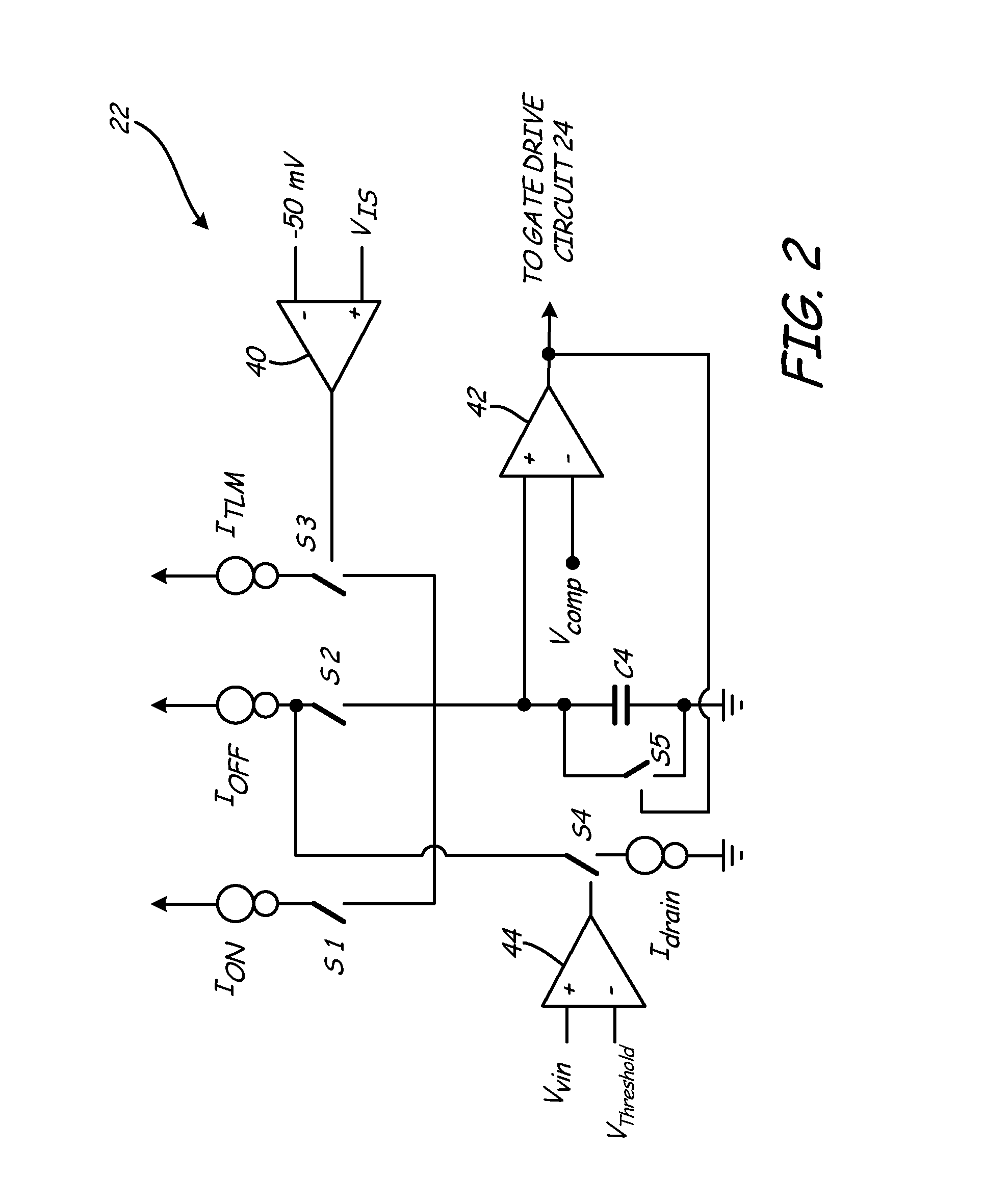Time-limiting mode (TLM) for an interleaved power factor correction (PFC) converter
a technology of power factor correction and time limitation, which is applied in the direction of electric variable regulation, process and machine control, instruments, etc., can solve the problems of increasing the size and cost of the devi
- Summary
- Abstract
- Description
- Claims
- Application Information
AI Technical Summary
Problems solved by technology
Method used
Image
Examples
Embodiment Construction
The present invention provides a system and method of controlling an interleaved power factor correction (PFC) circuit operating in a discontinuous conduction mode (DCM). The controller employs a normal mode of operation in which inductor currents in each PFC sub-circuit are estimated based on the monitored input voltage and monitored output voltage, and switching devices associated with each PFC sub-circuit are controlled to ensure DCM operation, in which OFF times ensure that inductor charging is initiated only after the inductor has been totally discharged (i.e., inductor current equals zero). As the input voltage increases, the OFF time associated with each PFC sub-circuit increases to ensure DCM operation. For interleaved PFC converters, the increased OFF time may result in a condition in which the inductor currents through each PFC sub-circuit do not overlap. In response, the controller activates a time-limiting mode (TLM) in which OFF time durations for each sub-circuit are b...
PUM
 Login to View More
Login to View More Abstract
Description
Claims
Application Information
 Login to View More
Login to View More - R&D
- Intellectual Property
- Life Sciences
- Materials
- Tech Scout
- Unparalleled Data Quality
- Higher Quality Content
- 60% Fewer Hallucinations
Browse by: Latest US Patents, China's latest patents, Technical Efficacy Thesaurus, Application Domain, Technology Topic, Popular Technical Reports.
© 2025 PatSnap. All rights reserved.Legal|Privacy policy|Modern Slavery Act Transparency Statement|Sitemap|About US| Contact US: help@patsnap.com



